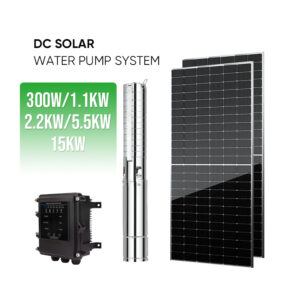You can calculate how many solar panels you need by dividing your yearly electricity usage by your area’s production ratio and then dividing that number by the power output of your solar panels. Let’s break that down a bit:
The formula we used to estimate the number of solar panels you need to power your home depends on these critical factors. Here are the assumptions we made and how we did our math:
Table of Contents
ToggleAnnual electricity usage
Your annual electricity usage is the energy you use in your home over a year. Measured in kilowatt-hours (kWh), this number is influenced by the appliances in your home that use electricity and how often you use them. Refrigerators, air conditioning units, small kitchen appliances, lights, chargers, and more all use electricity.
According to the U.S. Energy Information Administration (EIA), the average American household uses 10,632 kWh of electricity per year (or 886 kWh per month), so we’ll use that number as the ideal solar panel system or solar array size, which would mean you could offset 100 percent of your electricity usage and utility bill with solar panels (in practice, it’s not this neat, but bear with us here). To get a more exact number based on how much energy you use, check last year’s electric bills to determine your average electricity consumption. Once you have that number, plug it into the equations below.
Solar panel wattage
Also known as a solar panel’s power rating, panel wattage is the electricity output of a specific solar panel under ideal conditions. Wattage is measured in watts (W), and most solar panels fall in the 300 – 400+ W of power range. We’ll use 400-watt panels in these calculations because 390-400 W is the most quoted capacity range on the EnergySage Marketplace, according to our latest Intel Report.
Production ratios
A solar panel system’s production ratio is its estimated energy output over time (kWh) to its actual system size (W). These numbers are rarely 1:1 – depending on how many hours of sunlight your system will get (primarily based on your geographic location), your production ratio will change accordingly.
For example, a 10 kW system that produces 14 kWh of electricity in a year has a production ratio of 1.4 (14/10 = 1.4) – this is an entirely realistic production ratio to see out in the real world. In the U.S., production ratios are usually anywhere from 1.1 to 1.7, so we’ll use those two numbers as the high and low estimates for our calculation.
See the average production ratio in your state based on quotes from EnergySage installers
Now, let’s work out the math
We have our three main assumptions (energy use, solar panel wattage, and production ratios) – so how do those numbers translate to an estimated number of solar panels for your home? The formula looks like this:
Number of panels = system size/production ratio/panel wattage
Plugging our numbers in from above, we get the following:
Number of panels = 10,632 kWh / 1.1 or 1.7 / 400 W
…which gives us between 15 and 25 panels in a solar array, depending on which production ratio we use (15 for a 1.7 ratio and 25 for a 1.1 ratio). If we use California as an example (average production ratio of 1.5), you’ll need about 18 panels, resulting in a system size of 7.2 kW.
Solar panel cost
There is a consideration for how many solar panels to buy without including cost. This varies widely depending on location, installation cost, and incentives, with warmer climates being cheaper but needing more panels and vice versa for colder climates.
Main considerations to determine how much solar you need
Calculating how many solar panels you need can be done with the three inputs above, but digging deeper, many more factors are at play in determining your ideal solar panel system size. Understanding production ratios, the relationship between system size and the number of panels, and the impact of home size can all be meaningful when designing your ideal solar panel setup.
How much solar power can your panels produce?
The amount of power (kWh) your solar energy system can produce depends on how much sunlight your roof receives, which creates your production ratio. The sunlight you get in a year depends on where you are in the country and the time of year. For instance, California has more sunny days annually than Massachusetts. But in either location, you’ll be able to produce enough power to cover your energy needs and say goodbye to your utility bills.
If you live in an area with fewer peak sunlight hours, you’ll need a more extensive solar array system installed at your home. Thus, production ratios differ according to geographic location, and a lower production ratio (because of less sunlight) means you’ll need more solar panels to get the amount of energy production you need.
Here’s an example: as mentioned above, two comparably sized households in California and Massachusetts consume the average amount of electricity for an American household, which is 10,632 kWh annually. As we calculated earlier, the California household needs about a 7.2 kW system to cover its electricity needs. A comparable household in Massachusetts needs about a 9.6 kW system.
Solar panel systems in California are smaller than in Massachusetts but can produce the same amount of power because they’re exposed to more peak sunlight hours each year. In less sunny areas like Massachusetts, you can make up for this disparity by using more efficient panels or increasing the size of your solar energy system, resulting in slightly more solar panels on your rooftop.
How many solar panels do you need for specific system sizes?
In our extended example at the beginning of this piece, we determined that a 7.2 kW system would probably cover the average energy use for an American household if you live in an area with a production ratio of 1.5, which might be a realistic number for homes in most parts of California.
Let’s extend that further and look at a few more examples. In the table below, we’ve compiled some solar panel number estimates for common solar system sizes . Again, the big caveat is that we’re using 1.5 as the production ratio of choice. This might be realistic for California shoppers, but for folks in the Northeast or areas with less sun, these estimates might be a bit high on the production end and low on the number of panels needed.
| System Size | Number Of Panels Needed | Estimated Annual Production |
|---|---|---|
| 4 kW | 10 | 6,000 kWh |
| 6 kW | 15 | 9,000 kWh |
| 8 kW | 20 | 12,000 kWh |
| 10 kW | 25 | 15,000 kWh |
| 12 kW | 30 | 18,000 kWh |
| 14 kW | 35 | 21,000 kWh |
The table above again assumes that you’re using 400 W solar panels, and your production ratio is 1.5. However, the number of panels you need to power your home and the amount of space your system will take up on your roof will change if you use lower-efficiency panels or high-efficiency panels (which generally correlates to low and high power rating, respectively).
Perhaps one of the most challenging aspects of sizing a solar panel array is estimating your household’s annual energy usage. Several more oversized consumer products or add-ons can significantly change your annual kWh requirements and greatly impact how many panels you will need. For example, if you’re running central air conditioning or powering a heated swimming pool in your backyard, the size of your solar panel array could be drastically altered. To get a feel for the size you’ll need, you should evaluate the energy impact of various products you own or are considering for your home.
How much roof space do you have?
Ultimately, you’ll only be able to install as many panels as you can fit on your roof. Below is a table that will give you a sense of how many square feet your system will take up on your roof, depending on the power output of the solar panels you select.
Square footage of different size solar panel systems
| System Size | 300 W Panels (sq. Feet) | 340 W Panels (sq. Feet) | 360 W Panels (sq. Feet) | 400 W Panels (sq. Feet) |
|---|---|---|---|---|
| 4 kW | 234 | 207 | 195 | 176 |
| 6 kW | 351 | 310 | 293 | 264 |
| 8 kW | 468 | 413 | 390 | 351 |
| 10 kW | 585 | 517 | 489 | 439 |
| 12 kW | 702 | 620 | 585 | 527 |
| 14 kW | 819 | 723 | 683 | 615 |
Home square footage compared to the number of solar panels needed
| Home Size | Estimated Annual Electricity Needed | Number Of Solar Panels Needed |
|---|---|---|
| 1,000 sq. feet | 4,710 kWh | 8 |
| 2,000 sq. feet | 9,420 kWh | 16 |
| 2,500 sq. feet | 11,775 kWh | 20 |
| 3,000 sq. feet | 14,130 kWh | 24 |
How many solar panels do you need for common appliances?
Reviewing the various kWh requirements for everyday household appliances and products, one thing is clear: specific add-ons will dramatically change monthly energy use and can impact the size of the solar panel system you should install. For example, pairing your electric vehicle with solar panels is a great way to reduce carbon emissions and improve energy efficiency; however, it should be planned accordingly, considering it could double the size of your solar energy system.
Though it’s certainly possible to install a solar system and then have a solar installer add more panels later to accommodate increased energy needs, the most pragmatic option is to size your system as accurately as possible based on your expected purchases – such as an electric vehicle, swimming pool or central air system. Asking yourself, “How many solar panels will I need for my refrigerator, hot tub, etc.” is an excellent habit for any new solar homeowner.
Solar panel requirements for individual appliances
| Product | Average Annual Electricity Needed | Number Of Solar Panels Needed |
|---|---|---|
| Refrigerator | 600 kWh | 1 |
| Window air conditioning | 215 kWh | 1 |
| Central air conditioning | 1,000 kWh | 2 |
| Electric vehicle | 3,000 kWh | 5 |
| Heated swimming pool | 2,500 kWh | 5 |
| Hot tub (outdoor) | 3,300 kWh | 6 |
I believe that after reading this article, you already have a clear understanding of how to install your own set of solar power generation equipment. Anyway, I hope this article is helpful to you.
?????? ?? ?? ?????? ???? ???????????!
Related Article
Five questions to ask before selling your home with solar panels
What to do if the photovoltaic system does not work on rainy days?






